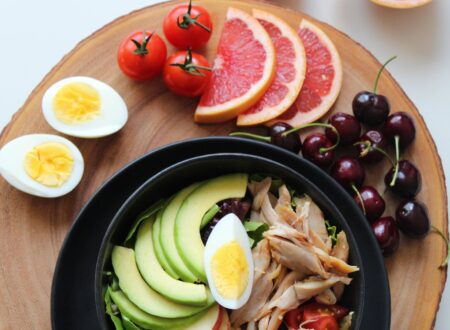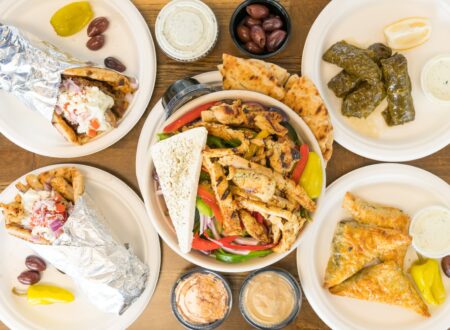In a world where time is short and healthy food can feel like a luxury, meal prep is the ultimate life hack. Whether you’re a busy professional, a student, or a parent juggling multiple schedules, prepping meals in advance can help you eat better, save money, and reduce stress during the week.
If you’ve ever thought meal prep was too complicated, expensive, or time-consuming—this guide is for you. With a little planning and a few simple habits, you can turn Sunday (or any day) into your secret weapon for healthy, delicious meals all week long.
Why Meal Prep?
Before we dive into the “how,” let’s talk about the “why.” Meal prepping has several benefits:
- Saves time: No more cooking every single night. Prep once, eat all week.
- Saves money: Less temptation to order takeout or buy overpriced lunches.
- Reduces stress: No more last-minute decisions about what to eat.
- Encourages healthy eating: You’re in control of the ingredients and portions.
- Cuts down on food waste: Use what you buy and plan meals efficiently.
Step 1: Plan Before You Prep
The foundation of good meal prep is a solid plan. Here’s how to do it:
Choose Your Prep Days
Most people meal prep on Sundays to get ready for the workweek, but you can choose any day that fits your schedule. Some also do a mid-week mini-prep on Wednesdays.
Decide What Meals to Prep
Are you prepping for breakfast, lunch, dinner, or all three? Start small. If you’re new to meal prep, begin with just lunches or dinners to ease into the habit.
Pick Your Recipes
Keep it simple. Look for meals that:
- Reheat well
- Store easily
- Can be made in bulk
- Use similar ingredients to save time and money
Popular meal prep-friendly foods include:
- Grilled chicken
- Roasted vegetables
- Rice, quinoa, or pasta
- Soups and stews
- Stir-fries
- Salads (store dressing separately!)
Step 2: Grocery Shopping Like a Pro
Once your meals are planned, it’s time to make a shopping list. Stick to your list to avoid impulse buys, and try these tips:
- Shop your pantry and fridge first to avoid buying what you already have.
- Buy in bulk for staple items like rice, oats, beans, and frozen veggies.
- Choose versatile ingredients that can be used in multiple meals.
- Pick a few seasonings or sauces to keep flavors interesting without needing tons of different ingredients.
Bonus tip: Shop when you’re not hungry. Your wallet will thank you.
Step 3: Cook Smart, Not Hard
You don’t need to spend hours in the kitchen to meal prep effectively. Maximize your time by using these strategies:
Batch Cook
Make large quantities of a few recipes at once. Cook proteins, grains, and veggies separately so you can mix and match throughout the week.
Use Multiple Cooking Methods
Use the oven, stovetop, and slow cooker or Instant Pot simultaneously to cook different items at once.
Keep it Simple
You don’t need gourmet meals every night. A simple grain + protein + veggie formula can create endless variations.
Example:
- Quinoa + grilled chicken + roasted broccoli
- Brown rice + black beans + sautéed peppers
- Pasta + ground turkey + steamed spinach
Step 4: Store Like a Boss
Proper storage is key to keeping your meals fresh and safe to eat.
Use the Right Containers
Invest in quality, BPA-free containers. Consider using:
- Glass containers for reheating in the microwave
- Divided containers for full meals
- Mason jars for salads or parfaits
Label Everything
Add the name and date to each container with a label or marker. Most prepped meals last 3–5 days in the fridge. You can also freeze extras for longer storage.
Store Ingredients Separately (Sometimes)
If you prefer flexibility, store components (like rice, protein, and veggies) separately and assemble your meals each day. This keeps textures fresh and prevents sogginess.
Step 5: Keep It Interesting
One common complaint about meal prep? Boredom. Avoid flavor fatigue by switching things up:
- Change the sauces: Use salsa, pesto, tahini, or soy-based sauces to create variety with the same base ingredients.
- Try themed days: Taco Tuesday, Stir-Fry Friday, or Mediterranean Monday.
- Use spices creatively: A simple change from Italian seasoning to curry powder can transform a dish.
Don’t be afraid to try new recipes once you’ve built your routine. Meal prep doesn’t mean eating the exact same meal five days in a row.
Step 6: Don’t Forget Snacks and Breakfast
Meal prep isn’t just for lunch and dinner. Prepping breakfast and snacks can help keep your energy up and avoid temptation throughout the day.
Quick Breakfast Ideas:
- Overnight oats
- Egg muffins
- Smoothie packs (pre-portion ingredients and freeze)
- Greek yogurt with fruit and granola
Healthy Snack Ideas:
- Hummus + veggies
- Hard-boiled eggs
- Mixed nuts
- Rice cakes with peanut butter
- Fresh fruit
Having grab-and-go options keeps your day on track and your hunger in check.
Final Thoughts: Progress Over Perfection
Meal prep isn’t about having picture-perfect meals lined up in identical containers. It’s about creating a routine that fits your life, supports your goals, and makes healthy eating easier.
You don’t have to prep every single meal. Even prepping two or three can take a huge load off your week. The key is consistency—build the habit, adjust it to your needs, and tweak it as you go.
Before you know it, you’ll be saving time, eating better, and wondering how you ever lived without it.





